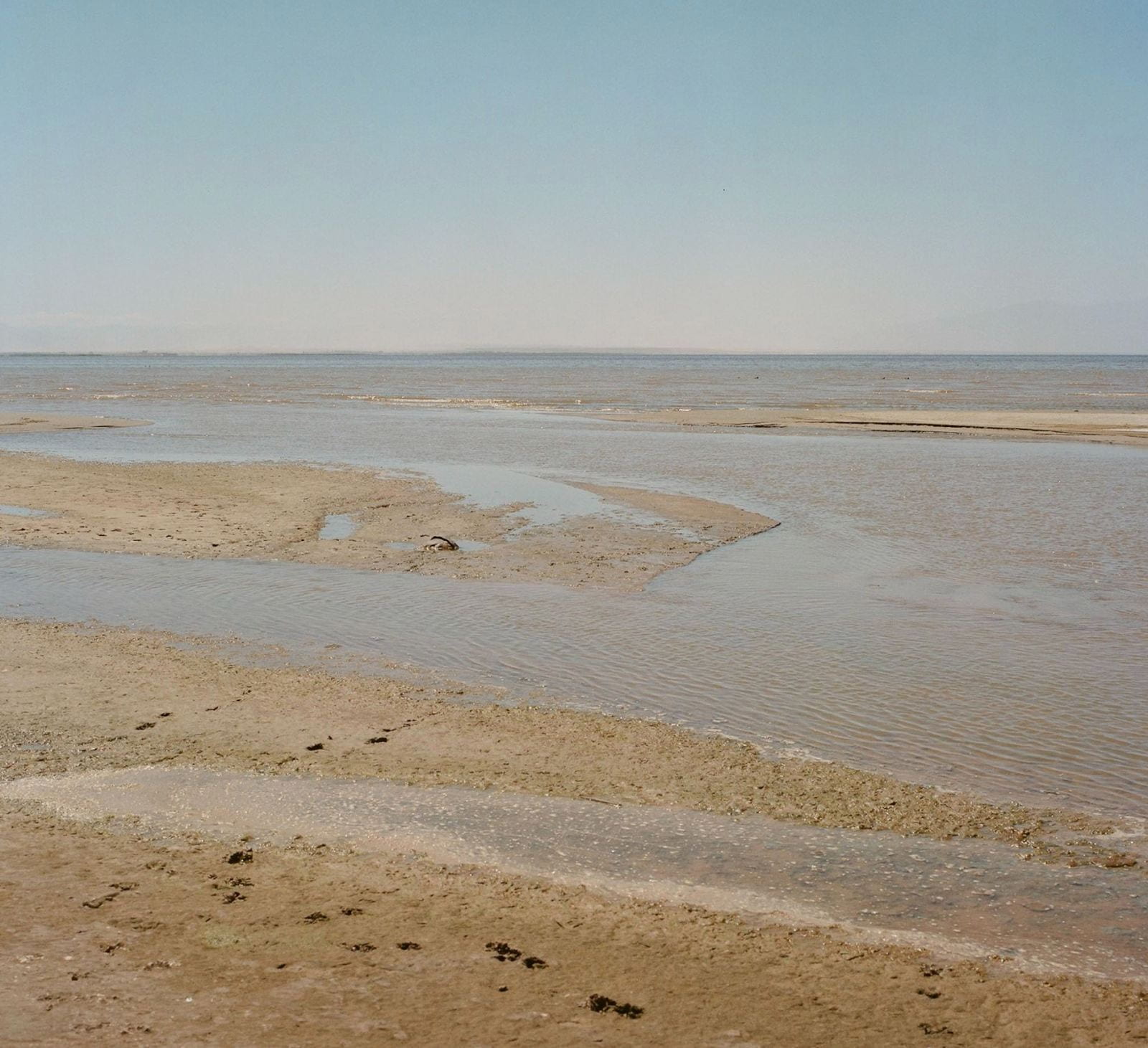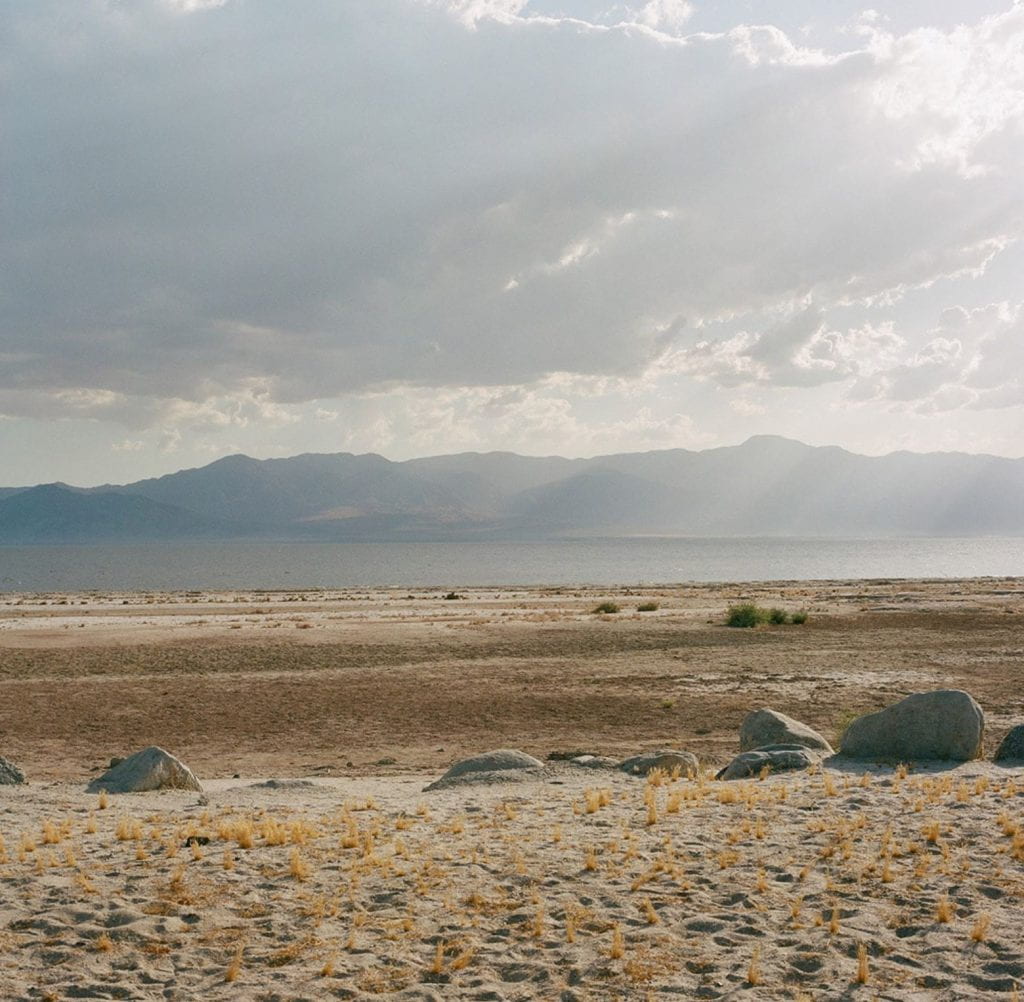The Salton Sea Story: The beautiful lake that exists despite itself in a desert, and how it affects us all
 Images taken by Debbie Bentley
Images taken by Debbie Bentley
From her website:
“Her work documenting the Salton Sea in Imperial County, California, was the subject of the monograph Salton Sea: of Dust and Water published by Daylight Books in 2020. The project, and subsequent book, captured the Salton Sea and dust remediation projects in 2018: the first-year state and federally mandated water transfers ended to the Sea.”
To shop for some of her work, follow this link: debrabentleyphotography.com/shop
What is the Salton Sea? Give me a quick recap
The Salton Sea- heard of it? The name suggests a couple things, and if you had salt in mind, you’re onto something. It’s the largest inland lake that sits in Southern California- but don’t think coast, think desert. According to an article titled ”Salton Sea and Salinity” by Ali Montazar, the Salton Sea has an inflow of approximately four million tons of salt each year from irrigation water. This irrigation water comes from its surrounding agricultural land cover, aka the Imperial and Coachella Valleys. The Salton Sea Authority shared that the Salton Sea is about 60 parts per thousand of salt- in comparison, the ocean is 35 parts per thousand.
The Salton Sea was actually the Salton Sink before it got a makeover. It’s thought to be the result of an engineering mistake in 1905, when water was diverted from the Colorado River and flooded for over a year, creating the sea- but there’s some nuance to this. Labeling this as a mere accident oversimplifies its history and downplays current environmental concerns. It creates a sense of reluctance and inspires the question: “why preserve a sea that isn’t supposed to exist?” The historical timeline reveals that flooding from the Colorado River into the Sink dates back to the late 1850s, suggesting that the sea would have naturally formed and undergone evapotranspiration. Yet, the burgeoning agriculture in the region since the 1850s posed challenges.
Initially, the Salton Sea was a bustling tourist attraction. Teeming with fish, boasting ideal weather year-round, and attracting migratory birds, it was a paradise. However, tourism has dwindled over time, overshadowed by a myriad of environmental and public health issues stemming from the receding sea. This complex situation remains a contentious topic, sparking debates and concerns at both state and national levels.
What’s going on right now?

The Salton Sea is an endorheic lake, a sink with no outlet or tributaries. Many endorheic lakes, like the Salton Sea, are shrinking as water is diverted for industrial and agricultural uses, and they face the effects of global warming. Increased heat accelerates evapotranspiration, causing the lake to close in on itself- in short, the lake shrinks alarmingly fast. The Salton Sea also sits in the middle of a desert, so naturally it doesn’t see much precipitation. Given that the only real inflow of significance into the Salton Sea is agricultural runoff, the lake gets filled with more and more pesticides and fertilizers with nowhere to go. It’s effectively a poisonous water pool. This creates truly massive fish and bird die-offs. Tragically, 7.6 million fish died in one day, and such loss results in thousands of bird deaths every year. With over 90 percent of wetlands in California gone, the Salton Sea was a bird sanctuary, and it’s now becoming a trap. Birds come and, without fish, they starve and can’t migrate because they are depleted of energy and simply die at the site.
The Salton Sea has also been identified as one of the best sources of lithium in the country. While many private interests are excited about this, community members, for the most part, are concerned. One study does a complete assessment of community input regarding lithium extraction. For one, it states the following:
“DLE will not use groundwater or water from the Salton Sea. The source of brine is from geothermal reservoirs several thousand feet below ground, and process water will be purchased from the local utility’s supply of surface water from the Colorado River.”
Lithium extraction using water from the Colorado River–an already over allocated water resource–with fierce community public health concerns and an already severe ecological crisis on the brink of collapse in the face of climate change sounds like the cherry on top; it’s a terrible idea. Additionally, we have no idea of the effects lithium extraction on public health, not to mention critical wildlife.
Why should I care? Do I play a role? I don’t even live there.
Imperial County produces two-thirds of the US winter vegetables. Read that again. One site provides two-thirds of vegetables for the entire country. Even if you’re sitting at a cafe in Maine eating a salad, there is a chance–and a big one at that–those veggies came from somewhere in Imperial County. You could be on the other side of the country, and you are still connected to this. You are more involved than you’ve been made to believe. Want to keep having veggies in winter? How about some steak? Imperial County produces an exuberant amount of alfalfa, a cattle feed that is the number one commodity in the country. Additionally, 70% of alfalfa feed is sold to China and Japan. You literally don’t even have to live in this country to still be connected to this issue. Imperial County makes its bank from cattle, alfalfa, and lettuce.
There is simply no soft way to word this; the exploitation of this environment, its people, and blatant inaction has benefited and fed this entire country. Its deterioration can and will impact you, whether you live there or not.
(Consider watching Green Desert directed by Leo Zahn)
Okay, so what am I supposed to do with this?
If you’re a public official reading this, then simply do better. Community residents have made it clear that public health is a huge concern, and it historically has not been prioritized. Lithium extraction could compromise the lives of people that provide two-thirds of winter produce for this country, if that doesn’t mean anything, then simply please stop being a public official.
Support community gardens. Eat produce seasonally. Support local, small farmers– they work really hard! Go to local farmers markets; they are so much fun. You can also grow your own food. Yes, to many, the request sounds absolutely deranged and beyond radical. But put a seed in some dirt, and give it light and water. It is not as hard as it’s been made out to be. YouTube has a million videos on any questions you may have about growing food.
Attend meetings that have to do with the Salton Sea or local environmental issues; you live there, and you have the right to clean air, water, and healthy food. You have the right to beautiful landscapes, and you can and should feel empowered to advocate for them. If your local politicians aren’t making the cut, vote them out and demand better. Just because things are bad doesn’t mean they always have to be. You’re more powerful than you’ve been made to believe. Boycott the nonsense. Be a responsible consumer; if it doesn’t align with your values, then dump it and encourage others around you to do the same.
Introduce yourself to your neighbors. Build community, and tell them about yourself. Tell them about what you read today. You might be surprised.
Extras
If you liked what you read, please see the following link. I have created a report that uses remote sensing applications to assess the turbidity index of the Salton Sea post haboob. The report also looks at vegetation indices using Landsat 8 data for Salton Sea surrounding land cover. Both pieces are done closely with recent crop report data.
Additionally, I helped write the piece Feet in Water, Head on Fire– definitely recommend! Directed by Terra Long, the film can show you an intimate and artful feel of this space (I’m 100% biased, personally love Terra and the work that went into this film).
Studies to read:
Identifying Major Hydrologic Change Drivers in a Highly Managed Transboundary Endorheic Basin: Integrating Hydro-Ecological Models and Time Series Data Mining Techniques https://doi.org/10.1029/2022WR032281
Aerosolized aqueous dust extracts collected near a drying lake trigger acute neutrophilic pulmonary inflammation reminiscent of microbial innate immune ligands https://doi.org/10.1016/j.scitotenv.2022.159882
What do frontline communities want to know about lithium extraction? Identifying research areas to support environmental justice in Lithium Valley, California https://doi.org/10.1016/j.erss.2023.103043


